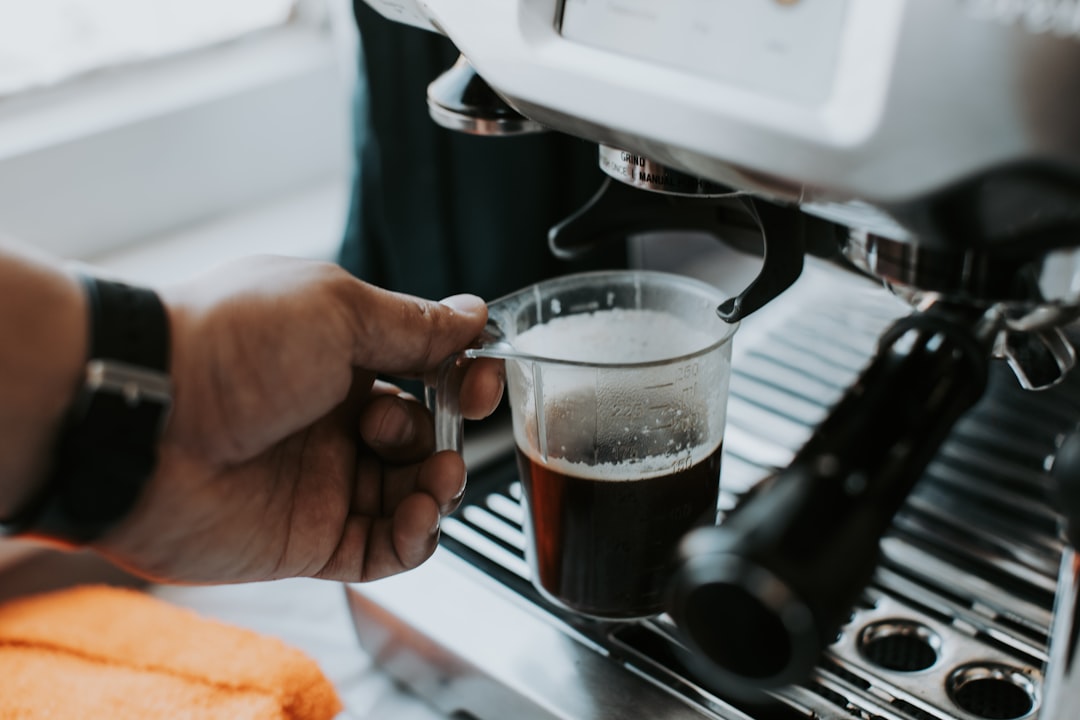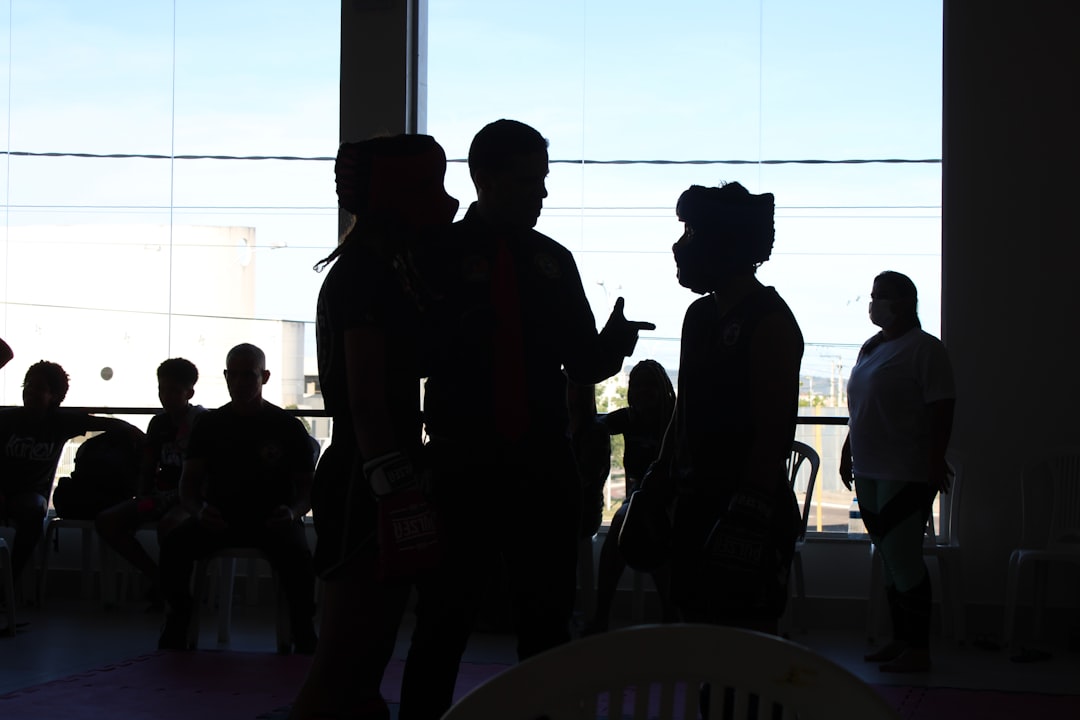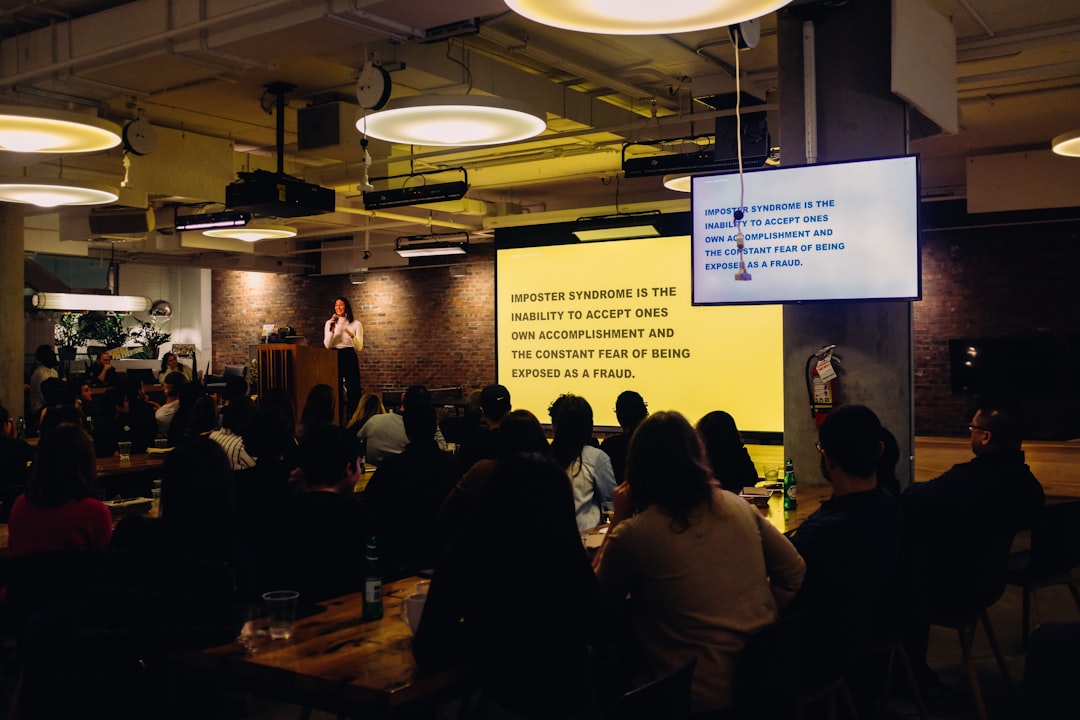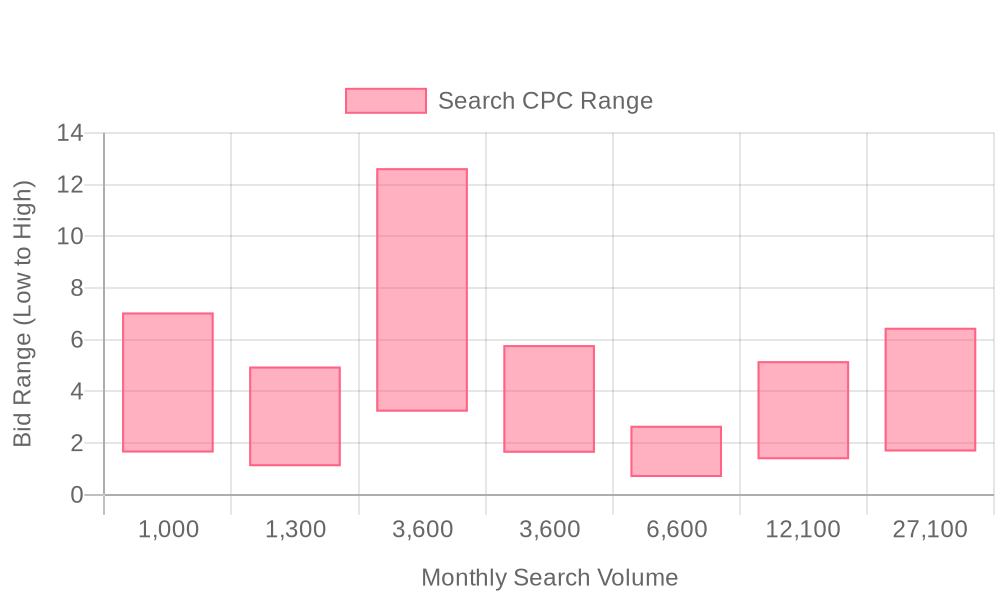
Supercharge your lead generation with a FREE Google Ads audit - no strings attached! See how you can generate more and higher quality leads
Get My Free Google Ads AuditFree consultation

No commitment
Supercharge your lead generation with a FREE LinkedIn Ads audit - no strings attached! See how you can generate more and higher quality leads
Get My Free Google Ads AuditFree consultation

No commitment
Supercharge your lead generation with a FREE Meta Ads audit - no strings attached! See how you can generate more and higher quality leads
Get My Free Google Ads AuditGet My Free LinkedIn Ads AuditGet My Free Meta Ads AuditFree consultation

No commitment
Supercharge your lead generation with a FREE Google Ads audit - no strings attached! See how you can generate more and higher quality leads
Get My Free Google Ads AuditFree consultation

No commitment
Google Ads continues to play a pivotal role in transforming how businesses within the event design industry capture, engage, and convert potential clients. The landscape is fraught with challenges such as ensuring that high demo interest doesn't slip through the cracks due to incomplete submissions or non-follow-ups. Addressing such strategic pain points, and leveraging Google Ads as a bridge between digital outreach and client acquisition, is essential for event planners aiming to stay ahead in a competitive marketplace.

Event design firms thrive when their campaigns align with the intent of high-value prospects researching creative solutions. A data-driven approach not only improves the efficiency of paid search but also delivers measurable increases in qualified leads and deal velocity by focusing spend on the highest-potential opportunities. For more on segmenting and targeting, explore how real-time audience insights can help you reach the right buyers at the right moment.
Modern event marketing requires a granular understanding of audience dynamics to truly drive conversions. Event planners and design agencies who tailor messaging and segmentation outpace competitors who rely on generic, one-size-fits-all campaigns that lead to wasted spend and disengaged prospects. See this guide to using Google Ads to increase event attendance and maximize advertising ROI for actionable tips on campaign optimization.
Ensuring that each landing page experience mirrors Google Ads creative is critical to converting clicks into committed leads. When high-intent users land on pages that reinforce ad promises and showcase relevant design portfolios, engagement and conversion rates rise sharply. This alignment also allows for advanced tracking of both digital and offline interactions, making it possible to attribute revenue to the right touchpoints throughout the sales cycle.
Analytics-driven bid and budget adjustments enable marketers to capture and retain strong leads while minimizing spend on low-quality traffic. Using unified data and real-time intent signals, teams can identify which prospects are demonstrating purchase-readiness and shift budget to those accounts, boosting ROI and reducing acquisition costs.
Integrating strategies across multiple channels, such as social, email, and direct outreach, creates a cohesive marketing narrative that amplifies engagement. When event design marketers are able to dynamically update audiences as leads progress down the funnel, they ensure higher relevance and nurture prospects until they are ready to convert, closing the loop between marketing investment and revenue outcomes. If you’re ready to streamline your event lead generation, get started for free with Sona and see how smarter insights can accelerate your pipeline.

Event design professionals operate in a results-driven environment where every marketing dollar must accelerate deal flow and build pipeline with precision. Google Ads offers a direct channel to specialized audiences who are actively searching for creative partners, making it possible to rapidly connect with prospects who already understand the value of expert event design. For more strategies on leveraging paid media in creative industries, explore the Sona blog for actionable guidance.
Securing premium projects, such as large-scale corporate launches or immersive brand experiences, hinges on delivering messages at pivotal decision-making moments. Google Ads empowers event design teams to capture demand right as it arises, using granular targeting to reach stakeholders when their intent peaks. For practical campaign inspiration and examples, review real Google Ads examples to see what works in similar verticals.
The granular targeting capabilities within Google Ads allow event design businesses to break into emerging markets or underserved regions with accuracy that was previously unattainable through traditional outreach. This approach not only extends geographic reach but also enables pinpointing enterprise buyers and creative agencies that would otherwise remain out of view. By leveraging Sona’s Audiences tool, event designers can focus spend on audiences with the highest likelihood of conversion, optimizing for both scale and quality.
Robust data analytics integrated across advertising platforms has shifted the way event design teams approach campaign strategy and performance review. Instead of sifting through disconnected metrics, marketers can rapidly surface which creative messages and channels yield the strongest pipeline outcomes. For organizations unifying digital advertising with CRM and sales data, this means every campaign can continuously improve, converting previously opaque insights into actionable growth strategies that drive measurable business impact. If you’re ready to elevate your event design marketing, get started with Sona and see how unified data can drive your next campaign.

Search campaigns are essential for event design firms seeking to capture high-intent prospects in real time. When a decision-maker searches phrases such as "event designers near me" or "exhibition booth design," these campaigns ensure your brand becomes the immediate answer at the moment of need. By leveraging unified go-to-market data, B2B teams can optimize budgets for keywords that drive conversions, dynamically adjusting spend as in-market behavior shifts. Integration with real-time visitor identification allows marketers to move beyond anonymous clicks, pinpointing the companies and buyers with the greatest purchase intent for creative and production services.
Display campaigns excel in building top-of-mind awareness among B2B audiences exploring event marketing solutions online. Placing visually compelling creative on industry publications and trade association sites ensures your brand is recognized by stakeholders early in the planning cycle. By syncing CRM and ad platforms, marketers can build and refresh audience segments based on pipeline status, ensuring display impressions are served to accounts actively progressing through the funnel. For a deeper dive into maximizing reach and ROI, see this guide to using Google Ads for events.
Video ads present a powerful format for event design companies to demonstrate their creative expertise, technical capabilities, and unique approach. Dynamic video content outperforms static visuals when explaining complex design concepts or showcasing past installations. By measuring real-time engagement across video placements, teams can shift budget toward creative assets that outperform, while enriched intent data highlights top converters, allowing for further personalization and follow-up.
Remarketing is critical for event design businesses where purchase cycles are complex and decisions require multiple stakeholder approvals. Campaigns that re-engage website visitors, proposal downloaders, or prior clients help bridge the gap between initial interest and final contract. Using unified interaction data, marketers can update remarketing lists dynamically as leads move through the buying journey, increasing message relevance and boosting conversion rates by targeting only those with active, recent engagement. To see how retargeting can be further optimized for high-impact campaigns, check out the intent-driven retargeting playbook.
Ad extensions provide trust-building credibility at the search results level for event design services. Including location details, service categories, and client reviews directly in ad units reduces friction and builds confidence among hesitant buyers. When extensions are populated with up-to-date testimonials and project highlights sourced from CRM systems, teams deliver a more persuasive first impression, increasing click-through rates and accelerating the path to inquiry. If you're ready to streamline your event marketing operations, get started for free with Sona.

Vertical keyword targeting transforms the event design market by allowing businesses to uncover and dominate specialized niches. By zeroing in on distinct service categories—such as immersive stage builds, sustainable installation management, or interactive exhibition concepts—marketers capture buying intent from decision-makers who might otherwise overlook broader event terms. This approach not only minimizes wasted ad spend but also secures a premium position in searches that signal high-value, project-ready prospects. For marketers looking to reach high-intent audiences at the right moment, real-time audience segmentation can drive hyper-personalized ad targeting and campaign efficiency.
A detailed competitor analysis further sharpens strategic focus. By examining which event design themes, formats, or verticals are underrepresented in competitors' campaigns, marketing teams can redirect budget toward unmet client needs. This adaptive targeting helps event designers identify emerging trends or overlooked industries, positioning their services as the go-to solution for audiences seeking innovation or specialized expertise. For additional inspiration and actionable campaign ideas, explore this collection of real Google Ads examples.
Advertising in digital forums and creative hubs where clients congregate for inspiration ensures event designers are visible at the earliest stages of project ideation. Placing tailored ads within these communities increases relevance and accelerates brand recognition. For more insights on event marketing and niche targeting, visit the Sona blog.
Content retargeting provides a powerful mechanism to nurture and convert interest. By reconnecting with visitors who have engaged with detailed case studies or dynamic portfolios, event design marketers build trust and reinforce authority in the space. As these users demonstrate escalating intent—such as revisiting project galleries or downloading planning guides—campaigns can dynamically update to reflect their journey. Leveraging unified data platforms, marketers can identify companies behind anonymous visits, adjust audience segments in real time, and sync enriched lead data directly into ad platforms and CRMs for high-impact retargeting. To experience seamless activation and smarter follow-up, get started for free with Sona.

Precise audience segmentation sets the foundation for effective event design advertising and campaign performance. By tailoring outreach to the distinct preferences and decision cycles of different event types, marketers can drive higher engagement and conversion rates while reducing wasted impressions and budget. Professionals who excel in segmentation consistently see stronger ROI from their Google Ads for Event Design, as every message and offer is mapped to specific client needs. For more strategies on improving your event marketing results, explore our event marketing playbooks.

| Industry | Keyword | Monthly Search Volume | Competition Level | Low Bid | High Bid |
| Event Design | event design | 1000 | LOW | 1.64 | 7.05 |
| Event Design | modern wedding invitations | 1300 | HIGH | 1.11 | 4.96 |
| Event Design | corporate event planner | 3600 | LOW | 3.22 | 12.63 |
| Event Design | design wedding invitations | 3600 | HIGH | 1.63 | 5.79 |
| Event Design | wedding flower arrangements | 6600 | HIGH | 0.69 | 2.67 |
| Event Design | event planners near me | 12100 | LOW | 1.38 | 5.17 |
| Event Design | event planner | 27100 | LOW | 1.68 | 6.46 |
A high-performing Google Ads strategy for event design begins with targeting keywords that match real buyer intent. High-intent search terms such as "best event designers" or "top event design agencies" capture prospects who are actively seeking premium services, cutting through the noise of less-qualified traffic. These buyers are further along in their decision process, which means ads targeting these terms are more likely to lead directly to qualified engagements and valuable conversions. For deeper insights and inspiration, review this collection of real Google Ads examples.
Long-tail keywords bring precision to campaign targeting, appealing to specialized needs that generic queries often miss. Phrases like "corporate event lighting designer," "interactive exhibition booth designer," or "sustainable gala stage design" attract audiences with distinct requirements and projects, raising the likelihood of meaningful interactions. These nuanced terms help drive higher engagement rates and position event design firms as experts in niche solutions, making every ad dollar work harder by reaching the right decision-makers. For more proven approaches, explore our event marketing examples.
The strategic use of negative keywords is essential for maximizing budget efficiency in event design advertising. By excluding irrelevant terms such as "DIY event decor," "event planning courses," or "cheap event supplies," marketers avoid wasting spend on low-value clicks. This discipline ensures that budgets are funneled toward prospects with genuine purchase intent, supporting more consistent and predictable campaign outcomes. When paired with platforms that surface real-time visitor identity and intent, advertisers can continuously refine negative keyword lists to align with evolving market signals and optimize for the highest-converting segments.
As event design campaigns scale, unified data and advanced audience management become critical. By integrating live behavioral insights from visitor activity, marketers can dynamically update keyword strategies and audience segments as prospects move through the funnel. When enriched audiences are synchronized between CRM and ad platforms, teams can adapt keyword targeting to reflect both online interactions and offline sales activity, closing the loop on attribution and maximizing the ROI of every search term. If you're ready to unify your keyword strategy with next-level audience data, get started for free with Sona.
Google Ads for Event Design unlocks measurable growth opportunities by enabling precise audience targeting and real-time engagement with high-intent buyers. Success in this space requires a disciplined, data-driven approach that combines creative messaging, technical implementation, and advanced conversion analytics.
Revenue-focused teams in event design benefit from sophisticated campaign orchestration, blending audience insights with predictive analytics to guide spend toward the most promising leads. The following framework outlines each critical step to maximize outcomes, minimize wasted budget, and elevate event promotion to a competitive advantage.
The foundation of effective event design advertising is a robust keyword portfolio customized to each event type, client segment, and geographic market. Start by segmenting keywords according to the specific services offered, such as "corporate event staging," "trade show booth design," or "experiential brand activations." Incorporate geographical modifiers to capture local and regional demand, pairing phrases like "event design agency in Chicago" or "Los Angeles exhibition design firm" with core service terms. This granular approach ensures ads reach decision-makers searching for exactly what your team delivers.
Leverage first-party data and tools to refine and expand keyword lists, identifying emerging trends and high-conversion phrases. Integrating predictive analytics helps prioritize budget on terms that signal true buyer intent, rather than generic traffic. For inspiration on effective ad copy and campaign structure, review this collection of real Google Ads examples. This process not only improves lead quality but also allows marketing teams to dynamically shift focus as new opportunities arise, keeping campaigns aligned with the most lucrative market segments.
Compelling ad copy is essential for differentiating event design services in a crowded digital landscape. Focus messaging on unique expertise, technical credentials, and past project outcomes that resonate with B2B buyers. Highlighting client testimonials, industry awards, or quantifiable impact—such as "200+ immersive activations delivered"—instills confidence and drives qualified clicks.
To enhance performance, incorporate dynamic elements that personalize ad content based on the searcher's industry or location. Advanced platforms enable marketing teams to build responsive ads that automatically update with the most relevant value proposition, ensuring each impression addresses the prospect’s immediate needs. For additional strategies, see this overview of best practices for Google Ads campaigns tailored to events. This level of personalization not only boosts engagement but also increases conversion rates by aligning messaging with buyer expectations at every stage of the decision journey.
Landing pages must deliver on the promises made in ad copy, creating a seamless journey from initial click to inquiry or booking. Structure each page around a clear, single objective—whether it's booking a consultation, downloading a portfolio, or requesting a proposal. Use visuals that showcase recent project work, interactive galleries, and concise value statements tailored to the visitor’s intent.
Incorporate conversion-focused features such as interactive forms, live chat, and scheduling links to lower friction and encourage immediate action. Integrating real-time visitor identification enables sales teams to follow up with high-potential leads the moment they express interest, turning anonymous clicks into personalized conversations. For step-by-step guidance on leveraging Google Ads for event promotion, explore this article on promoting your next event. This approach also supports dynamic audience updates, continually refining targeting based on actual engagement patterns.
Holistic measurement of campaign effectiveness requires tracking both micro-conversions—like portfolio downloads, video views, or content shares—and macro-conversions such as confirmed bookings or signed contracts. Set up robust analytics to capture each touchpoint, mapping the buyer journey from initial interest through final commitment. This enables marketers to identify friction points, optimize creative assets, and better allocate spend across the funnel.
Advanced conversion tracking goes beyond web forms to include offline events, CRM updates, and multi-channel interactions. By syncing enriched lead data directly into both advertising and sales platforms, teams achieve unified attribution that accurately reflects ROI. This closed-loop feedback not only validates marketing investment but also provides actionable insights for ongoing optimization, ensuring every campaign dollar is aligned with real business outcomes.
Event design firms can drive measurable growth by combining retargeting with innovative creative strategies, ensuring their brand stays top of mind for potential clients who have already shown interest. Leveraging insights from past engagement, marketers can tailor promotions around trending design styles and seasonal concepts, maintaining relevance and sparking renewed interest among previous visitors by using dynamic audience segmentation.
Collaboration with reputable industry publications amplifies both reach and authority, positioning your expertise in front of audiences already seeking design inspiration and trusted vendors. By targeting campaigns through these niche channels, event design businesses gain direct credibility and higher engagement rates from decision-makers who value third-party validation. For more inspiration, explore this collection of real Google Ads examples.
Localizing digital advertising efforts to metropolitan centers increases influence in high-value markets, where most premium event opportunities originate. Precision geo-targeting ensures budgets are invested in areas with the greatest revenue potential, while also reinforcing your presence among influential local event planners and corporate buyers. By leveraging intent signals, you can prioritize outreach and maximize your impact in these competitive regions.
Search query data offers more than campaign performance metrics; it reveals emerging interests, unmet needs, and content gaps in the market. By analyzing these queries, event design firms can continuously refine their messaging and future content, transforming raw intent signals into actionable guides that attract and convert high-intent prospects.
Modern marketing platforms enable event design businesses to go beyond anonymous website traffic by identifying key accounts and specific companies engaging with their brand. Syncing enriched audiences and lead data directly into platforms like Google Ads and CRM systems ensures every interaction is tracked and measured, turning digital ad spending into a predictable growth engine. If you're ready to align your data and drive results, get started for free with Sona.
Successfully leveraging Google Ads to market your event design services can significantly enhance your reach and engagement. By understanding the intricacies of targeting, keyword strategy, and ad optimization, you can effectively connect with your desired audience and boost attendance at your events.
Throughout this article, we've discussed the core challenges event designers face in the digital advertising landscape, including competition for attention and the need for precise targeting. We've explored key strategies such as selecting the right keywords, crafting compelling ad copy, and utilizing audience insights to maximize your ad spend and achieve the best results.
Imagine the transformation that comes with mastering these techniques—you can turn potential challenges into opportunities, driving not only attendance but also meaningful engagement at your events. Embrace the power of data-driven advertising to elevate your event design business to new heights.
Ready to take your advertising efforts to the next level? Start for free to experience our platform and its capabilities today. Let us help you unlock the insights you need to succeed.
Best practices include aligning campaigns with high-value prospects, using data-driven approaches to focus on high-potential opportunities, ensuring landing pages mirror ad creatives, and integrating strategies across multiple channels for cohesive marketing.
Optimization involves tailoring messaging and segmentation, using analytics-driven bid and budget adjustments, leveraging real-time audience insights, and ensuring campaign alignment with audience dynamics to drive conversions.
Target high-intent keywords like 'best event designers' and long-tail keywords such as 'corporate event lighting designer' to capture prospects seeking specialized services and ensure ads reach decision-makers with specific project needs.
Success is measured by tracking both micro- and macro-conversions, using advanced conversion tracking that includes both online and offline interactions, and ensuring robust analytics to map the buyer journey and optimize spend.
Budgets should be dynamically adjusted based on analytics-driven insights, focusing on high-intent prospects and using strategic use of negative keywords to maximize efficiency and reduce spend on low-value traffic.
Join results-focused teams combining Sona Platform automation with advanced Google Ads strategies to scale lead generation

Connect your existing CRM

Free Account Enrichment

No setup fees
No commitment required

Free consultation

Get a custom Google Ads roadmap for your business
Join results-focused teams combining Sona Platform automation with advanced Meta Ads strategies to scale lead generation

Connect your existing CRM

Free Account Enrichment

No setup fees
No commitment required

Free consultation

Get a custom Google Ads roadmap for your business
Join results-focused teams combining Sona Platform automation with advanced LinkedIn Ads strategies to scale lead generation

Connect your existing CRM

Free Account Enrichment

No setup fees
No commitment required

Free consultation

Get a custom Google Ads roadmap for your business
Join results-focused teams using Sona Platform automation to activate unified sales and marketing data, maximize ROI on marketing investments, and drive measurable growth

Connect your existing CRM

Free Account Enrichment

No setup fees
No commitment required

Free consultation

Get a custom Google Ads roadmap for your business
Over 500+ auto detailing businesses trust our platform to grow their revenue
Join results-focused teams using Sona Platform automation to activate unified sales and marketing data, maximize ROI on marketing investments, and drive measurable growth

Connect your existing CRM

Free Account Enrichment

No setup fees
No commitment required

Free consultation

Get a custom Google Ads roadmap for your business
Over 500+ auto detailing businesses trust our platform to grow their revenue
Join results-focused teams using Sona Platform automation to activate unified sales and marketing data, maximize ROI on marketing investments, and drive measurable growth

Connect your existing CRM

Free Account Enrichment

No setup fees
No commitment required

Free consultation

Get a custom Google Ads roadmap for your business
Over 500+ auto detailing businesses trust our platform to grow their revenue
Our team of experts can implement your Google Ads campaigns, then show you how Sona helps you manage exceptional campaign performance and sales.
Schedule your FREE 15-minute strategy sessionOur team of experts can implement your Meta Ads campaigns, then show you how Sona helps you manage exceptional campaign performance and sales.
Schedule your FREE 15-minute strategy sessionOur team of experts can implement your LinkedIn Ads campaigns, then show you how Sona helps you manage exceptional campaign performance and sales.
Schedule your FREE 15-minute strategy sessionOur team of experts can help improve your demand generation strategy, and can show you how advanced attribution and data activation can help you realize more opportunities and improve sales performance.
Schedule your FREE 30-minute strategy sessionOur team of experts can help improve your demand generation strategy, and can show you how advanced attribution and data activation can help you realize more opportunities and improve sales performance.
Schedule your FREE 30-minute strategy sessionOur team of experts can help improve your demand generation strategy, and can show you how advanced attribution and data activation can help you realize more opportunities and improve sales performance.
Schedule your FREE 30-minute strategy sessionOur team of experts can help improve your demand generation strategy, and can show you how advanced attribution and data activation can help you realize more opportunities and improve sales performance.
Schedule your FREE 30-minute strategy session





Launch campaigns that generate qualified leads in 30 days or less.
